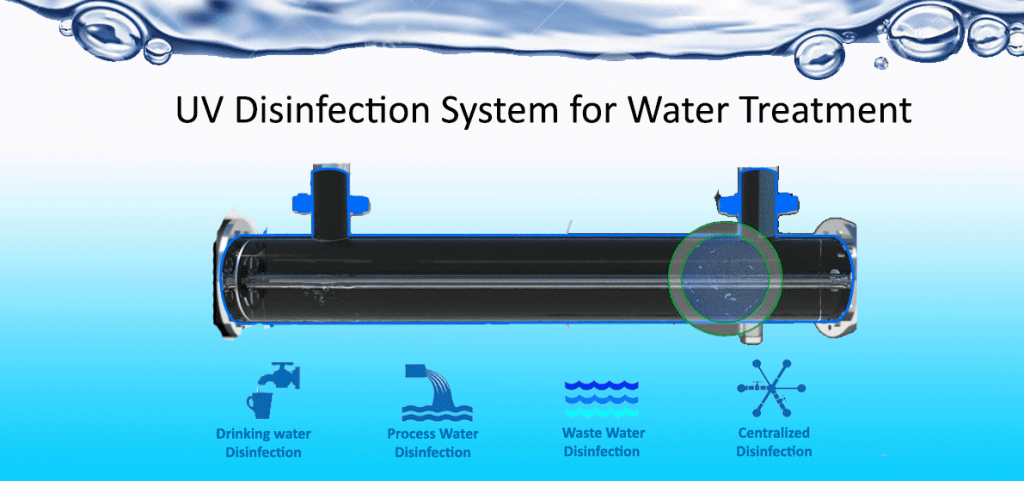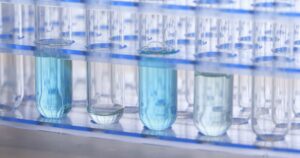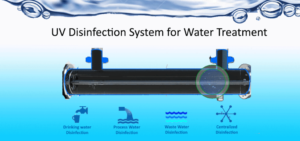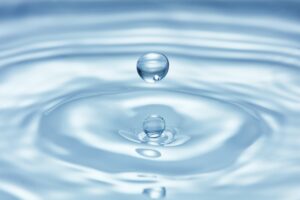How it works
Energy from a UV lamp destroys the deoxyribonucleic acid (DNA) and prevents microorganisms from reproducing. UV lamps can be made to emit only 254 nm wavelength UV radiation, or both 185 and 254. The 185 nm bulbs are used for TOC reduction. The 185 nm wavelength first promotes the conversion of dissolved oxygen to ozone. Ozone is then changed by the 254 nm wavelength UV light to hydroxyl radicals. These hydroxyl radicals then oxidize organic molecules in the water. With sufficient contact time and/or recirculation, the organics are oxidized to CO2 and water.
UV Dosage
Disinfection effectiveness depends on the UV system dosage. The UV dosage must also take into consideration the transmission qualities of the source water. The total intensity that the UV lamp emits is measured in microwatts at a specific wavelength. By combining the total lamp intensity and the residence time, a UV dosage can be derived. This dosage is expressed in microwatt-seconds per square centimeter (mW-sec/cm2). Most UV bulbs are manufactured to be able to provide a dosage of 30,000 mW-sec/cm2. This 30,000 mW-sec/cm2 is what the bulb is rated to produce at the end of 8-9,000 hours (about a year). This means that when new, UV bulbs produce approximately 60,000 mW-sec/cm2. The reason that lamps are rated in this manner is key to understanding why we, at Hydro, recommend a six month replacement of the UV bulb, and annual replacement of the quartz jacket.
Lamp Life
Unlike a regular light bulb, UV lamp performance deteriorates with time. Their life span is limited. According to one expert, they should be replaced every 9 to 12 months for maximum effectiveness. The reason is scale build-up and Solorization – a condition in which the quartz discolors. This discoloration decreases the intensity of the UV light. Solorization affects both the lamp material and the quartz jacket. The effective UV intensity decreases approximately 40-60 percent over 9,000 hours (just over one year) of operation.
At this point, I would like you to refer to Hydro Technical Bulletin #1 “Is 18 Meg-ohm Good Enough”, and #3 “Quality Assurance: The Key to Consistency”. If a customer has a purified water system, he/she wants consistency from day to day. To assure consistency, the exchange frequency of some items is time dependent (Bulletin #3). The UV bulb and jacket along with the prefilter and carbon tank are such items. As is pointed out in Bulletin #1, there are six categories of contaminants in tap water. A standard Picosystem will address four of these items. A customer who’s Picosystem contains a UV unit is, obviously, trying to achieve even better water quality. His/Her system now addresses five of the six contaminant categories. It only seems reasonable that our recommendation on maintenance should be consistent with maintaining the customer’s water system in a manner that will not allow a change in quality. Only with a recommendation of six month bulb and annual quartz jacket replacement can we feel confident in achieving this goal.∞




